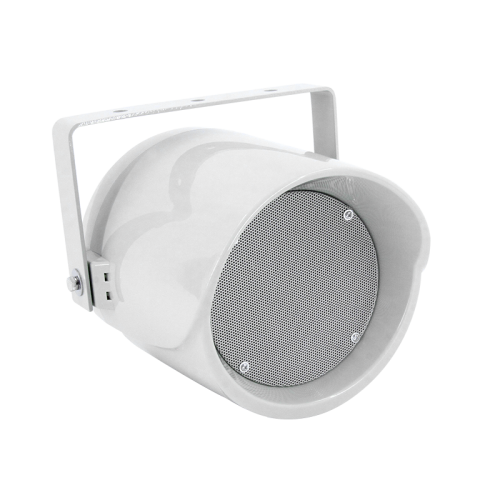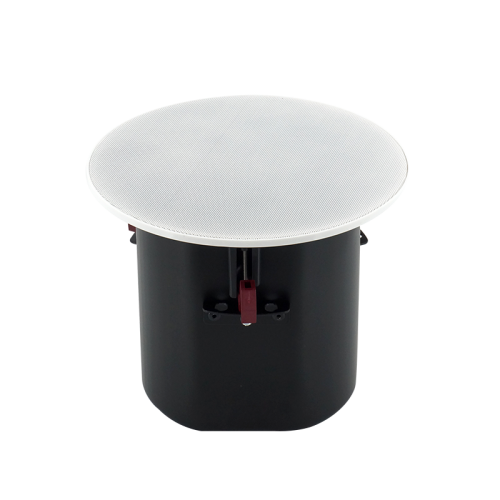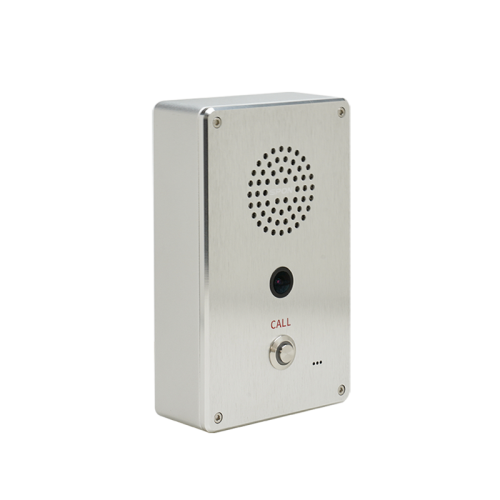Comprehensive Overview to Public Address Equipments
Public address (PA) systems are generally experienced in various jobs such as office complex, residential complicateds, industrial office complex, institutions, healthcare facilities, train stations, airport terminals, bus manufacturing facilities, stations, and financial institutions - IP PA System. This overview will provide a comprehensive introduction of PA systems

Components of a PA System
No matter the sort of PA system, it generally includes four primary components: source devices, signal amplification and processing tools, transmission lines, and audio speaker systems.
Resource Equipment
Songs Gamers: Made use of for history music.
Microphones: Consists of zone-select microphones and common microphones.
Voice Storage Devices: For saving business and emergency broadcast messages.
Signal Handling and Amplification Tools
Audio Signal Processor: Takes care of audio signal compensation, depletion, equalization, and so on.
Pre-Amplifier: Pre-amplifies sound signals.
Power Amplifier: Enhances audio signals to drive audio speakers, giving continuous voltage outcome.
Transmission Lines
The service administration platform software program allows the tracking facility to put in central administration over the program and intercom interaction systems. It assists in online device status monitoring, mistake medical diagnosis, and troubleshooting, solidifying system stability and uniformity.
Speakers
Ceiling Audio Speakers: Indoor, flush-mounted in the ceiling, constant voltage or consistent resistance.
Wall-Mounted Speakers: Wall-mounted, consistent voltage or consistent impedance.
Column Audio Speakers: Free-standing, appropriate for indoor or outdoor use.
Horn Speakers: High sensitivity, ideal for outside or interior use.
Camouflaged Audio speakers: For exterior setups like yards or parks, made to appear like stumps, mushrooms, or rocks.
Audio Technical Specifications of PA Equipments
In everyday environments, typical audio pressure degrees are:.
• Office sound: 50-60 dB.
• Regular discussion: 65-70 dB.
• Fabric manufacturing facility sound: 110-120 dB.
• Little caliber gunfire: 130-140 dB.
• Huge jet airplane noise: 150-160 dB.
Signal-to-Noise Proportion (SNR)
SNR determines the ratio of the signal voltage to sound voltage, revealed in decibels. A greater SNR indicates much less noise and much better audio top quality. Typically, SNR must go to least 63 dB, with high-fidelity audio speakers getting to over 110 dB.
Input Sensitivity
This is the minimum input voltage required to accomplish the rated result power. Greater sensitivity implies less input signal is required. Usually, power amplifiers have an input sensitivity of 0.775 V (0 dB) to 1.5 V (+6 dB).
Optimum Result Power (Audio Speakers)
The maximum power a speaker can take care of simply put bursts without damage.
Rated Power (Speakers)
.
The constant power an audio speaker can handle without distortion, gauged in watts (W) Ranked power is a typical worth, and speakers can take care of peak power approximately 2-3 times the rated power.
Constant Voltage vs. Continuous Resistance Outputs
Consistent Voltage (70V or 100V)
Makes use of voltage to drive speakers, enabling longer transmission ranges and several speakers in parallel. Nonetheless, audio top quality is slightly substandard contrasted to continuous resistance systems.
Power amplifiers have to match the voltage score of the audio speakers to prevent damage.
Consistent Impedance.
Uses current to drive speakers, supplying far better sound high quality yet restricted transmission distance (up to 100 meters)
Insusceptibility matching is crucial; as an example, an 8Ω amplifier ought to be matched with 8Ω audio speakers.
Choose and Configuring Speakers
Speaker Option
Indoor Spaces with Ceiling: Usage flush-mounted ceiling speakers without a back cover.
Indoor Spaces with Only a Structure: Usage ceiling speakers with back covers or hanging ball-type speakers.
Exterior Locations: Usage weatherproof column audio speakers or horn speakers.
Parks and Gardens: Usage concealed speakers developed for aesthetic functions.
High-End Interiors: Usage classy hanging audio speakers.
Fire-Safe Areas: Usage fireproof speakers with covered designs.
Audio speaker Setup
Speakers must be dispersed uniformly across the solution location to make certain a signal-to-noise proportion of at the very least 15 dB. Common background noise levels and suggested audio speaker placement are:.
Premium office hallways: 48-52 dB.
Huge buying malls: 58-63 dB.
Busy road areas: 70-75 dB.
Speakers must be positioned to guarantee a sound pressure degree of 80-85 dB in the majority of environments. Ceiling audio speakers should be spaced 5-8 meters apart, or 8-12 meters for background music just. For emergency situation programs, ensure that no location is even more than 15 meters from the nearest speaker.
Amplifier Sizing
Estimation Method:
For service and service PA systems: P= K1 × K2 × ΣPo where:.
P = Total amplifier result power (W)
K1 = Line loss compensation aspect.
K2 = Aging variable (1.2-1.4)
ΣPo = Complete power need.
For smoke alarm systems, make use of 1.5 times the overall number of speakers.
Instance Computation:
For a history songs system with 10 audio speakers at 20W each: P= 1.26 × 1.2 × 10 × 20W × 0.7= 211W.
Final amplifier capacity ought to be 1.3 times this worth: 211W × 1.3= 274W
Installation Needs
Audio speaker Placement
Audio speakers should be uniformly and tactically dispersed to meet protection and sound quality demands
Power Supply
Tiny PA systems can use normal power outlets, while systems over 500W need a committed power supply. Power ought to be stable, with automatic voltage regulators if required. The power supply should be 1.5-2 times the equipment's power consumption
Cable and Conduit Installment
Use copper-core wires for signal transmission. Cords should be shielded and directed via proper channels, preventing interference from electric lines. Make certain appropriate splitting up between power and signal lines.
Lightning Protection and Grounding
PA systems call for proper grounding to prevent damages from lightning and electrical disturbance. Use committed basing for tools and make certain all grounding actions satisfy safety and security requirements
Installation Top quality
Cable and Connector High Quality
Usage top notch cable televisions and ports. Make sure links are protected and properly matched to prevent signal loss or disturbance.
Audio speaker Links
Preserve right phase alignment in between audio speakers. Usage trustworthy methods for connecting cords, such as terminal or soldering blocks, and protect links from environmental damage.
Grounding and Safety Checks
Verify all grounding is correctly mounted and inspect the safety and security of power links and tools setups. Do thorough examinations before completing the setup.
Evaluating and Adjustment
Check the entire system to make certain all parts work appropriately and satisfy style specs. Change setups as needed for ideal performance.
Craftsmanship Needs for Public Address Equipments
Building And Construction Top Quality Requirements
The high quality of construction in a public address (PA) system project is vital to meeting design specs and individual demands. For that reason, it is important to purely follow the style plans, stick to standards, avoid rework and delays, and maintain thorough building logs. Key areas to focus on consist of:
Cable Television Option and Installation
During the building of a system, focus is usually concentrated on equipment, yet the choice of transmission cords is also crucial for achieving satisfactory sound high quality. High-quality broadcasting tools (amplifiers, speakers, etc) is required, however the quality of the transmission cords likewise affects audio quality.
Parallel speaker cords have integral capacitance between the wires, which is not appropriate for long-distance transmission as it can attenuate high frequencies and trigger vague or stifled high audios. Twisted set cable televisions can efficiently conquer this concern and should be utilized for long-distance transmission.
Secured twisted pair cords protect against electro-magnetic disturbance and improve cable sturdiness, making them suitable for long-distance setups. Thicker cords minimize transmission loss but rise price and installment problem.
Use balanced links for all signal links between PA system gadgets, with soldered endpoints.
For systems with fire alarm system features, make use of fireproof or flame-retardant copper-core cables.
Cords should be routed with steel channels or wire trays, and should not share trays with illumination or power lines. When splicing is necessary, make use of specialized ports and leave adequate cable television size at both ends with clear permanent markings.

Connecting Speakers and Program Lines
When connecting audio tools, it's crucial to guarantee stage consistency in between audio speakers and program lines. Stage interference in between audio speakers can trigger substantial variations in sound stress degrees, bring about unequal sound circulation. Consequently, adhere strictly to wiring labels and standard link methods
.
3 typical connection approaches in PA systems are:.
Turning Approach: Stripping insulation from cables, turning them with each other, and safeguarding them with tape or clamps. This technique is basic however might deteriorate over time.
Screw Terminal Technique: Removing insulation and placing wires right into screw terminals, after that tightening the screws. This approach is frequently made use of.
Soldering Approach: Removing insulation, turning cords, and soldering them with each other, then covering with tape. This technique is more ideal and trustworthy for high-demand or damp atmospheres.
Despite the technique, usage tinned wire to assist in soldering and avoid rust. Use PVC or steel conduit to safeguard revealed cords from joint boxes to audio speakers.
System Grounding
To lessen disturbance from the power system, different protective and operational groundings should be established. Advised method is to set up different copper strips for weak and strong electric systems in their respective vertical shafts.
The general grounding resistance must not go beyond 1Ω.
Construction Examination
As a result of the complexity of PA systems with countless links and components, extensive evaluation is needed. General inspections ought to include:
Safety checks of devices installation.
Confirmation of high-voltage line arrangements (IP Paging System).
Precision of terminations and links
Special attention ought to be provided to device settings, such as impedance matching activate audio speakers. Confirm that buttons are established correctly to prevent damages. Inspect the output selection switches over on signal resource tools, setups on signal processing equipment, amplifier bridging buttons, and power supply settings.
As soon as these steps are verified, get ready for tools debugging. Since debugging methods differ based upon certain job needs, they are not covered in information here.
Quality Records
Certifications, technical specs, and paperwork for audio speakers, enclosures, transformers, controllers, electrical outlets, amplifiers, sound processing equipment, shielded wires, etc.
Pre-installation, covert evaluation, self-inspection, and mutual examination documents.
Records of design adjustments and final illustrations - SPON Communications.
Quality inspection and analysis records for channel and cable television setup
Records of PA system setup and debugging.
Significant Installation Demands
Equipment Installation Order
Place frequently utilized equipment like the primary broadcast controller at the top for very easy gain access to. For more facility systems with a 2.0-meter cabinet, placement often made use of equipment between 0.8 to 1.5 meters for benefit.
Devices Link Order
The mixer results are dispersed to each amplifier, and if making use of pure power amplifiers, attach to the INPUT audio input. Amplifier outcomes then connect to addressable terminals, area control boxes, or area selectors, and ultimately to the audio speakers.
Wiring Factors to consider
For comprehensive circuitry, different audio and power lines using different manufacturers' cables can assist stay clear of complication. Plan electrical wiring ahead of time to prevent missing cables, which would certainly require redoing the whole setup.
Power Supply
Use a devoted power sequencer for PA systems to ensure consistent power monitoring and constant device start-up sequences. The main power supply ought to consist of a ground line to shield devices and protect against static-related threats
Devices Choice
Do not depend entirely on appearance; consider individual reviews and market online reputation. Products from credible suppliers with comprehensive testing and experience are generally much more dependable
Wireless Microphones
For wireless microphones, select UHF versions for far better array and signal stability. For mobile use, favor headset microphones.
Connection Cords
Usage solid connections for longevity and avoid relying upon adapters, which can create loose links over time. Properly solder connections to ensure toughness and convenience of maintenance.
Closet Installment
If using deep power amplifiers, guarantee the closet measurements (e.g., 600x600mm) are compatible with IP Paging System the devices. Measure closet depth and spacing before setup.
Correct preparation, premium devices, and thorough installation and maintenance are key to achieving optimal audio top quality and reliable efficiency in a PA system.

Speakers need to be put to ensure an audio pressure degree of 80-85 dB in a lot of atmospheres. When attaching audio devices, it's vital to ensure phase uniformity between audio speakers and broadcast lines. Stage interference between speakers can create substantial variants in audio pressure degrees, leading to uneven sound distribution. Amplifier outputs after that link to addressable terminals, area control boxes, or area selectors, and ultimately to the audio speakers.